1. GNSS-based Electronic Toll Collection (ETC) system
NHAI has invited expressions of interest (EoIs) from around the world for the implementation of GNSS-based (satellite-based) electronic toll collection to provide a seamless and barrier-free tolling experience for National Highways users.
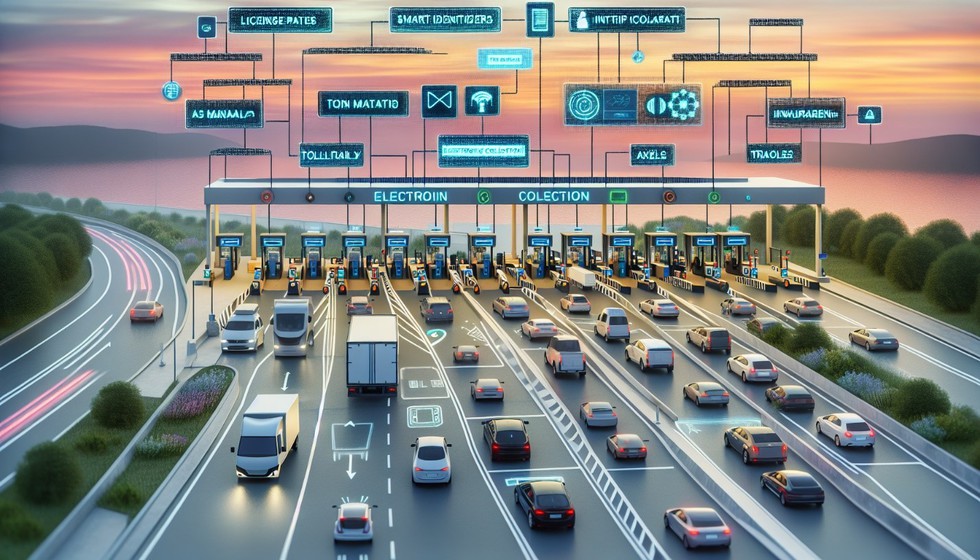 About GNSS-based Electronic Toll Collection (ETC) system
About GNSS-based Electronic Toll Collection (ETC) system- It is a barrier-free method of electronic toll collection that uses Global Navigation Satellite System (GNSS) technology to track vehicles and calculate tolls based on the distance travelled on tolled highways.
- Working: The system uses satellites or constellations of satellites to track vehicles' movements and calculate tolls based on the distance travelled on tolled highways.
- Vehicles equipped with GNSS-enabled On Board Units (OBUs) are charged on the distance they have travelled on tolled highway stretches.
- NHAI plans to implement the GNSS-based electronic toll collection (ETC) system within the existing FASTag ecosystem, initially using a hybrid model where both RFID-based ETC and GNSS-based ETC will operate simultaneously.
Significance
- Facilitates smooth vehicle movement on National Highways.
- Provides barrier-less, free-flow tolling for a hassle-free experience.
- Implements distance-based tolling, charging users only for the distance travelled.
- Enhances toll collection efficiency by reducing leakages and curbing toll evasion.
2. Capital Account Convertibility
To stay “future-ready” for India’s fast-growing economy, the Reserve Bank of India (RBI) has set aspirational goals: capital account liberalization, internationalization of the Indian rupee (INR), universalizing digital payments, and globalizing India’s financial sector over a multi-year timeframe.
 About Capital Account Convertibility
About Capital Account Convertibility- Balance of Payments Account: It is a statement of all transactions between a country and the outside world. It consists of two accounts:
- Current Account: Deals with the import and export of goods and services.
- Capital Account: Involves cross-border movement of capital via investments and loans.
- Current Account Convertibility: Freedom to convert rupees to other currencies for payments without restrictions.
- Capital Account Convertibility:
- Freedom to conduct investment transactions without constraints.
- No limits on converting rupees to foreign currency for asset acquisition.
- No limits on NRIs bringing in foreign currency to acquire assets in India.
- Why is it important? Caution in developing countries: Inflows and outflows of capital are volatile, can cause excessive currency appreciation/depreciation and impact monetary and financial stability.
- India's Progress:
- Partial capital account convertibility
- India's cautious approach in opening its capital account was praised after the 1997 East Asian currency crisis revealed issues with high current account imbalances and volatile short-term capital flows.
- The 2006 S. S. Tarapore committee report highlighted that even countries with strong fiscal positions could face currency crises and rapid exchange rate deterioration.
Source: RBI’s agenda: capital account liberalisation, globalisation of the rupee and digital payment system
3. NaturAfrica initiative
The European Commission (EC) has removed Tanzania from the list of countries eligible for its 18 million Euro conservation grant to be launched in East Africa as part of its NaturAfrica initiative.
 About NaturAfrica initiative
About NaturAfrica initiative- The NaturAfrica initiative is a European Union (EU) program aimed at supporting biodiversity conservation in Africa through a people-centred approach.
- It identifies key landscapes for conservation and development, focusing on creating jobs, improving security, and sustainable livelihoods while preserving ecosystems and wildlife.
- The initiative is structured around two pillars: short-term actions in key landscapes and medium-term support to address the root causes of biodiversity loss and environmental degradation by integrating these concerns into other sectors.
About European Commission
- The European Commission is the executive body of the European Union (EU), responsible for proposing new laws and policies, monitoring their implementation, managing the EU budget, and ensuring the correct application of EU policies and laws across member states.
- It is composed of 27 members, known as Commissioners, each representing a different member state.
- The Commission is led by the President, who is elected by the European Parliament and proposed by the European Council.
4. Mongla Port
India is looking to operate the Mongla Port in Bangladesh and build a new terminal, aiming to counterbalance China's strategic presence in the region.
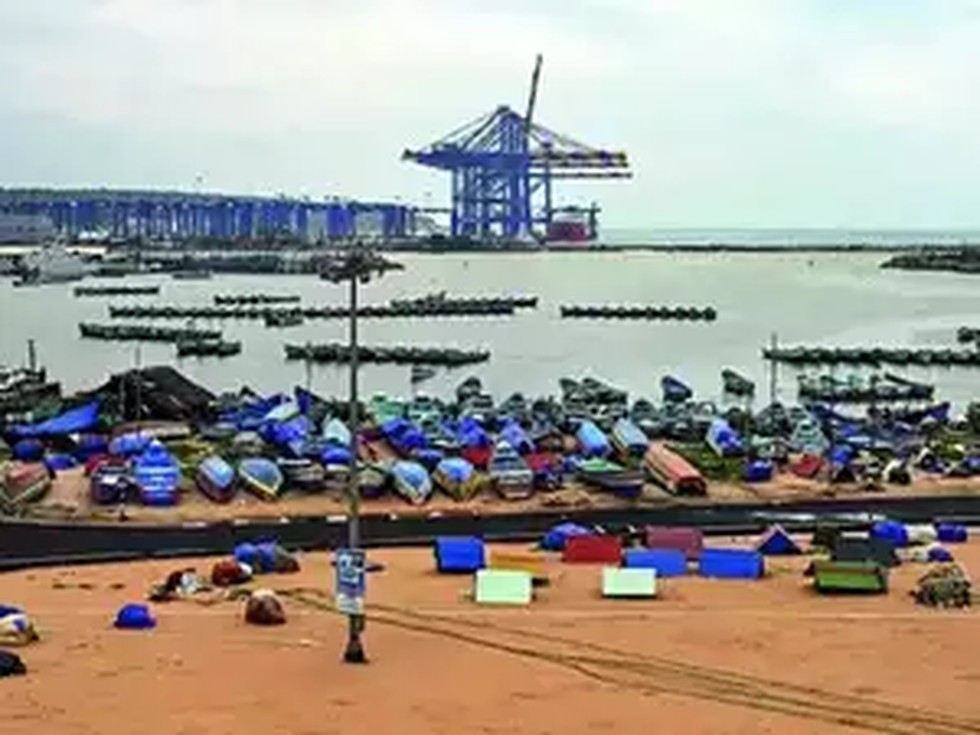
About Mongla Port
- The Port of Mongla is located in the Bagerhat District of Bangladesh. It lies 62 km north of the Bay of Bengal coastline.
- It is situated at the confluence of the Pasur River and the Mongla River.
- The Port is surrounded and protected by the Sundarban mangrove forest.
- Mongla is the second largest seaport in Bangladesh after Chittagong.
Significance for India:
- Provides strategic access to India's northeastern states (e.g., Assam, Tripura, Meghalaya).
- Reduces distance and transportation costs for goods to and from these regions.
- India Ports Global Limited (IPGL) has expressed interest in operating Mongla Port, which would be its third international port operation after Chabahar in Iran and Sittwe in Myanmar.
- Expansion project: India and Bangladesh signed a MoU on the use of Chattogram and Mongla ports in 2015.
- The MoU envisages the transit of goods from Mongla port to the northeastern states of India through waterways, roads and railways.
5. Sticky Inflation
Sticky inflation has dashed the hopes of early rate cuts with experts now pencilling in repo rate cuts by the RBI from December this year. Economists expect a shallow rate cut cycle with RBI likely to lower the repo rate by 75 – 100 basis points.
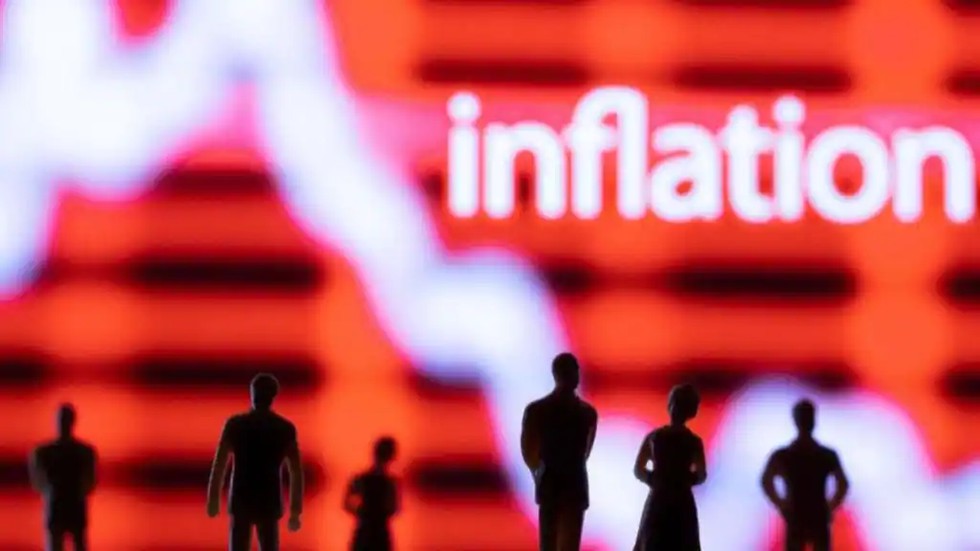 About Sticky Inflation
About Sticky Inflation- It refers to a phenomenon where prices do not adjust quickly to changes in supply and demand, leading to persistent inflation.
Features of sticky inflation:
- Prices for goods or services that don't appear to be coming down anytime soon are considered sticky.
- Causes: Rising wages and prices for consumer goods and services are typically the main factors behind inflation stickiness.
- Prices for medical services, education, and housing are some of the most important factors that can contribute to sticky inflation.
- It erodes the purchasing power of consumers and puts pressure on housing affordability.
- It presents challenges for central banks in controlling inflation without causing a recession.
- To address sticky inflation, central banks usually raise interest rates.
- However, raising rates too fast can cause the economy to fall into a recession, while not raising them enough will allow prices to continue increasing.
Source: Sticky inflation delays rate cut
6. Foreign Exchange Management Act (FEMA), 1999
RBI is planning to rationalise the Guidelines for Export and Import of Goods and Services under the Foreign Exchange Management Act (FEMA), 1999.
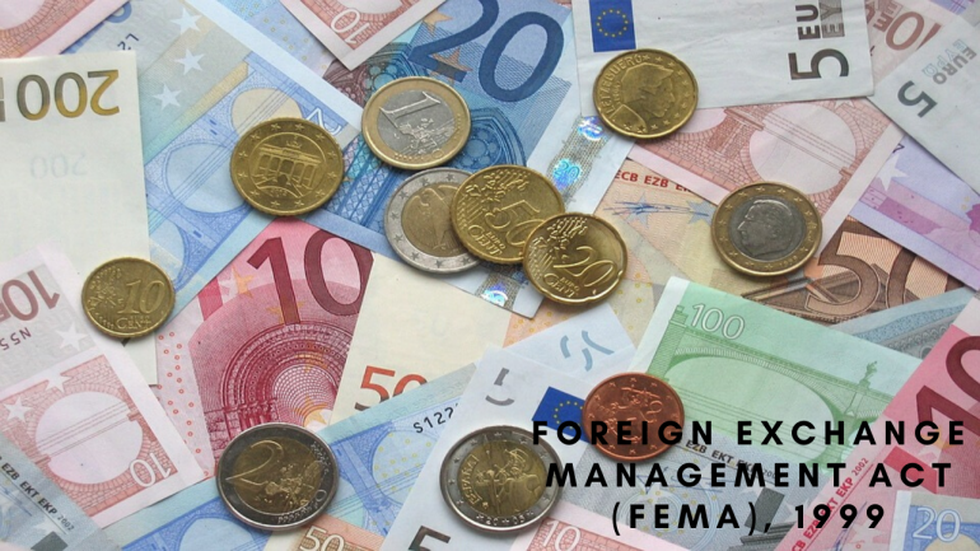 About Foreign Exchange Management Act (FEMA), 1999:
About Foreign Exchange Management Act (FEMA), 1999:- FEMA came into force on June 1, 2000, as a successor to the Foreign Exchange Regulation Act, or FERA, of 1973, with changing economic conditions in a post-liberalisation India.
- The main objective of FEMA is to facilitate external trade and payments and promote the orderly development and maintenance of the foreign exchange market in India.
- FEMA deals with provisions relating to procedures, formalities, dealings, etc. of foreign exchange transactions in India.
- The FEMA regulates various aspects of foreign exchange transactions, including the acquisition and holding of foreign exchange, the payment and settlement of foreign exchange transactions, the export and import of currency, and other related activities.
- The act also empowers the RBI to make rules and regulations to carry out the provisions of the act.
- It also makes the offence related to foreign exchange a civil offence.
- Violations of the provisions of FEMA can result in penalties and fines.
- FEMA's head office is known as the Enforcement Directorate and is situated in Delhi.
- Applicability:
- It is applicable to the whole of India and equally applicable to the agencies and offices located outside India (which are owned or managed by an Indian Citizen).
- FEMA is applicable to the following entities and transactions:
- Foreign exchange.
- Foreign security.
- Exportation of any commodity and/or service from India to a country outside India.
- Importation of any commodity and/or service from outside India.
- Securities as defined under the Public Debt Act 1994.
- Purchase, sale, and exchange of any kind (i.e., Transfer).
- Banking, financial, and insurance services.
- Any overseas company owned by an NRI (Non-Resident Indian) and the owner is 60% or more.
- Any citizen of India, residing in the country or outside (NRI).
- It envisages that the RBI shall have a controlling role in the management of foreign exchange. Since RBI cannot directly handle foreign exchange transactions, it authorizes “Authorised Persons” to deal in foreign exchange.
- An Authorized person can be
- Authorized dealer.
- Money changer,
- Off-shore banking unit or
- Any other person for the time being authorized to deal in foreign exchange or foreign securities by the RBI.
7. Pump and Dump Scheme in the Stock Market
The Securities Exchange Board of India’s (SEBI) recently slapped a fine of Rs 7.75 crore on 11 individuals for allegedly operating a ‘pump and dump’ scheme.
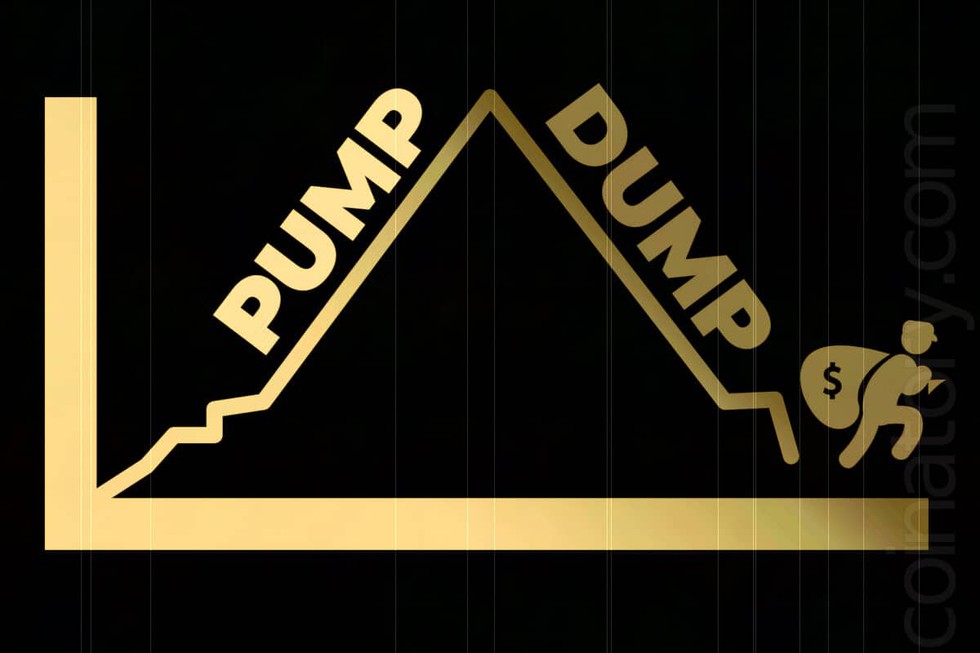 About Pump and Dump Scheme:
About Pump and Dump Scheme:- In the stock market, a pump and dump scheme is a type of manipulation activity that involves artificially inflating the price of a stock through false and misleading information, only to sell the stock at the inflated price and leave investors with significant losses.
- It is particularly prevalent in the micro-cap and small-cap sectors, where companies often have limited public information and trading volumes are lower.
- How does pump and dump work? This process involves several steps:
- First, a significant amount of stock in a relatively small or thinly traded company is acquired. These stocks are often referred to as ‘penny stocks’ because they trade at low prices and are more susceptible to price manipulation due to low trading volumes.
- Then the stock is aggressively promoted to create a buzz and attract investors. This promotion can take various forms, including sending out mass emails or newsletters with exaggerated claims about the company’s prospects, as well as misleading social media posts. Promoters aim to create buzz and drive interest in the stock.
- As the promotion gains traction, more investors buy into the stock, driving up its price due to increased demand. Sometimes, fraudsters may also engage in coordinated buying to further boost the price. During this phase, the stock often experiences rapid and significant price increases, creating the illusion of a hot, high-potential investment.
- Once the stock price has been pumped up sufficiently, the sell-off begins at the inflated prices. This selling pressure causes the stock price to plummet, often leaving unsuspecting investors with significant losses as the stock returns to its actual value or even lower.
- Impact:
- Those who bought into the hype and purchased the stock at inflated prices typically face substantial losses when the stock price crashes.
- These schemes undermine confidence in the financial markets, making legitimate investors wary of potential fraud.
- Under the SEBI guidelines, pump and dump schemes are completely banned.
8. Arun-III Hydro Power Project
The 900 MW Arun III Hydropower Project in eastern Nepal, constructed with Indian assistance, recently achieved a significant milestone with a tunnel breakthrough.
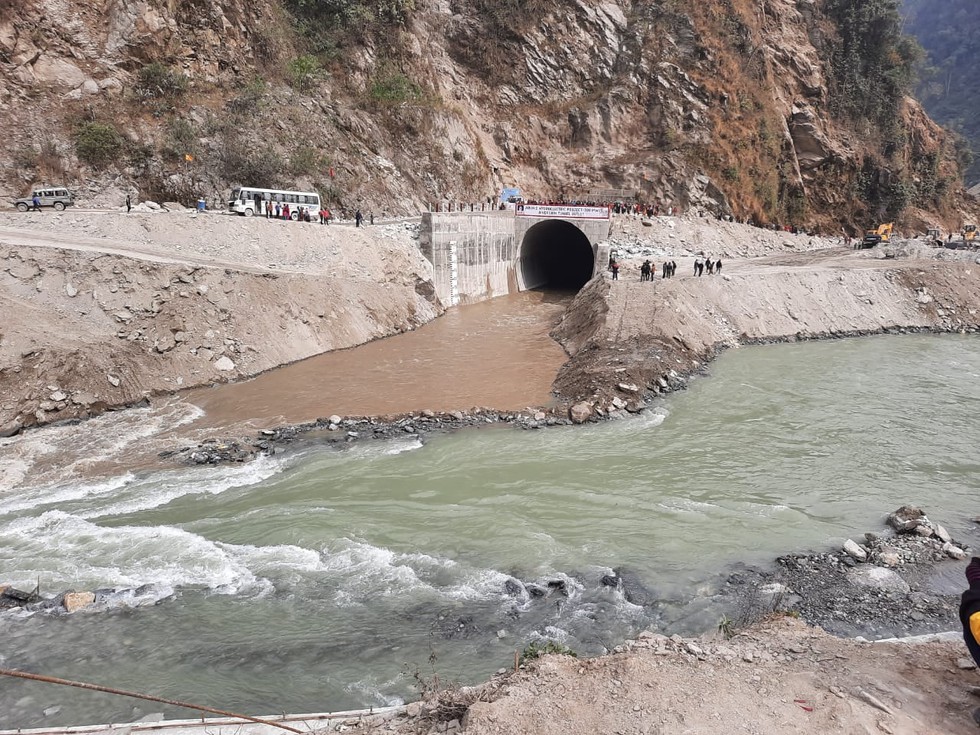 About Arun-III Hydro Power Project:
About Arun-III Hydro Power Project:- It is a 900 MW run-of-the-river hydropower project being constructed on the Arun River in Sankhuwasabha District of Eastern NEPAL.
- Arun is a tributary of the Koshi River in Nepal.
- The project comprises a 70-meter-tall and 466-meter-long concrete gravity dam and a Head Race Tunnel (HRT) of 11.74 km with underground an power house containing four generating units of 225 MW each on left bank.
- It is being developed with Indian assistance at a cost of Rs. 144 billion.
- Once completed, it will be the biggest hydroelectric facility in Nepal.
- It is being developed on a build-own-operate-and-transfer (BOOT) basis by Satluj Jal Vidyut Nigam (SJVN) Arun-III Power Development Company (SAPDC), a joint venture of the Government of India and the Government of Himachal Pradesh.
- SAPDC will operate the facility for a period of 25 years, excluding the construction period of five years, before transferring ownership to the Nepal government.
- Nepal will receive 21.9% of the electricity generated at the power plant as free power during these initial 25 years of commercial operations.
- The output from the power plant will be transferred to Muzaffarpur in India through a 317 km-long 400 kV double circuit transmission line.
9. Zombie Company
An Associated Press analysis found the number of publicly-traded “zombie” companies has soared to nearly 7,000 around the world, including 2,000 in the United States.
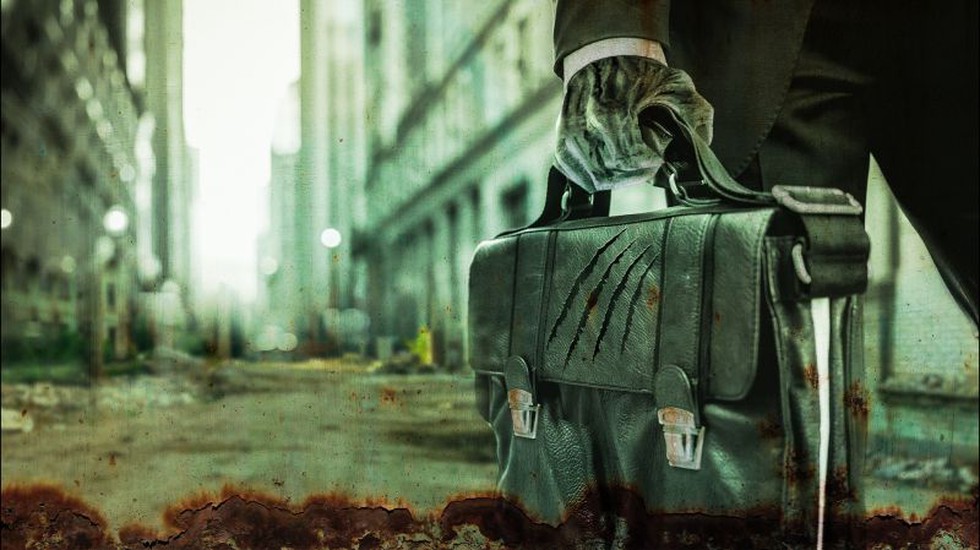 About Zombie Company:
About Zombie Company:- It is a corporate entity with very limited cash flows, only sufficient to pay the interest on the debt borrowed but not the principal amount of the loan.
- The revenue generated by the business operations only covers the fixed routine and operating costs (wages, rent, interest payments on debt, for example).
- These companies, often referred to as the "living dead" or "zombie stocks," have no excess capital to invest in growth, innovation, or significant improvements.
- They are highly dependent on banks for financing.
- They are typically subject to higher borrowing costs and may be one just event—market disruption or a poor quarter performance—away from insolvency or a bailout.
- They are “uncompetitive survivors” and contribute to lower productivity in the global economy.
- These companies can pose a risk to the broader economy by tying up resources that could be more effectively used by healthier, more innovative firms.
10. World Environment Day
The 51st edition of World Environment Day was a record-breaking success, with an unprecedented 3,854 official events and tens of millions of online engagements across the globe.
 About World Environment Day:
About World Environment Day:- It is celebrated annually on June 5 to promote more sustainable practices while advocating for the protection of our planet.
- Led by the United Nations Environment Programme (UNEP), it is the largest global platform for public outreach to raise awareness and take action on urgent environmental issues – the planet’s most-pressing environmental problems.
- Theme of World Environment Day 2024: Land restoration, desertification, and drought resilience.
- History:
- The United Nations General Assembly declared June 5 as World Environment Day during the Stockholm Conference on the Human Environment, held in Stockholm, Sweden, in 1972 (June 5-16).
- It was the first world conference to make environmental protection a major issue.
- The UNEP was established in the same year.
- World Environment Day was celebrated for the first time in 1973 under the theme 'Only One Earth'.
- Since then, it has grown into a global platform involving over 150 countries.
Key Facts about United Nations Environment Programme (UNEP):
- It is the leading environmental authority in the United Nations system.
- UNEP uses its expertise to strengthen environmental standards and practices while helping implement environmental obligations at the country, regional, and global levels.
- UNEP is driving transformational change by drilling down on the root causes of the triple planetary crisis of climate change, nature and biodiversity loss and pollution.
- UNEP’s work is focused on helping countries transition to low-carbon and resource-efficient economies, strengthening environmental governance and law, safeguarding ecosystems and providing evidence-based data to inform policy decisions.
- Headquarters: Nairobi, Kenya.
- Reports published by UNEP: Emission Gap Report, Global Environment Outlook, Frontiers, Invest into Healthy Planet.
- It provides secretariat functions for numerous multilateral environmental agreements (MEAs) and other entities as follows:
- Convention on Biological Diversity (CBD)
- Convention on International Trade in Endangered Species of Wild Fauna and Flora (CITES)
- Minamata Convention on Mercury
- Basel, Rotterdam, and Stockholm Conventions
- Vienna Convention for the Protection of Ozone Layer and the Montreal Protocol
- Convention on Migratory Species


























































































































































.png)
.png)
.png)
.png)
.png)


.png)
.png)
.png)





.png)
.png)






.png)
.png)
.png)
.png)
.png)
.png)
.png)
.png)
.png)

.png)







.png)
.png)


.png)
.png)
.png)


.png)

.png)
.png)





.jpg)

.png)
.png)


.png)

.png)
.png)
.png)

.jpg)

.jpg)


.png)

.png)
.png)
.png)
.png)
.png)
.png)
.png)
.png)
.png)
.png)




.png)

.png)





.png)
.png)
.png)
.png)
.png)
.png)
.png)
.png)
.png)
.png)
.jpg)
.jpg)

.png)
.png)
.png)
.png)
.png)
.png)
.png)
.png)
.png)
.png)
.png)
.png)
.png)
.png)
.png)
.png)
.png)
.png)
.png)
.png)
.png)
.png)



.png)
.png)

.jpg)
.jpg)


.jpg)
.jpg)
.jpg)
.jpg)
.jpg)

.jpg)








.jpg)
.jpg)
.jpg)
.jpg)
.jpg)

















.jpg)
.jpg)







.jpg)


















.jpg)
.jpg)






























































































.jpg)
.jpg)


























.jpg)

.jpg)










.jpg)








.jpg)




.jpg)










.jpg)


















.jpg)












































.jpg)














.jpg)
.jpg)
.jpg)





.jpg)

.jpg)
.jpg)





































































.jpg)


































.jpg)
.jpg)
















































.jpg)












.jpg)


.jpg)




.jpg)
.jpg)
.jpg)

.jpg)
.jpg)
.jpg)
.jpg)

.jpg)
.jpg)
.jpg)

.jpg)
.jpg)
.jpg)
.jpg)
.jpg)
.jpg)
.jpg)
.jpg)

.jpg)


.jpg)
.jpg)
.jpg)
.jpg)
.jpg)
.jpg)
.jpg)
.jpg)
.jpg)
.jpg)











.jpg)
.jpg)





.jpg)
.jpg)
.jpg)
























.jpg)
























.jpg)









.jpg)
.jpg)







.jpg)
.jpg)









































.jpg)
.jpg)
.jpg)
.jpg)
.jpg)

.jpg)
.jpg)
.jpg)
.jpg)
.jpg)


.jpg)
.jpg)
.jpg)
.jpg)
.jpg)

.jpg)
.jpg)
.jpg)
.jpg)
.jpg)
.jpg)
.jpg)
.jpg)
.jpg)
.jpg)
.png)

.png)
.png)

.png)
.png)
.png)
.png)


.jpg)
.jpg)

.jpg)
.jpg)
.jpg)

.png)
.png)
.png)
.png)
.png)
.png)
.png)

.png)
.png)
.png)
.png)
.png)
.png)
.png)
.png)
.png)
.png)





































































-min.png)



.png)




.png)








































